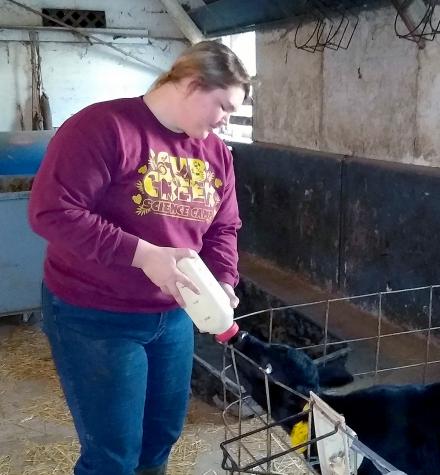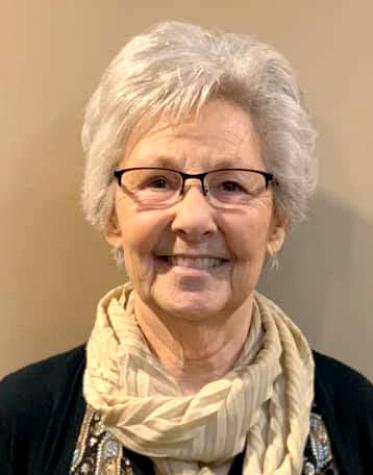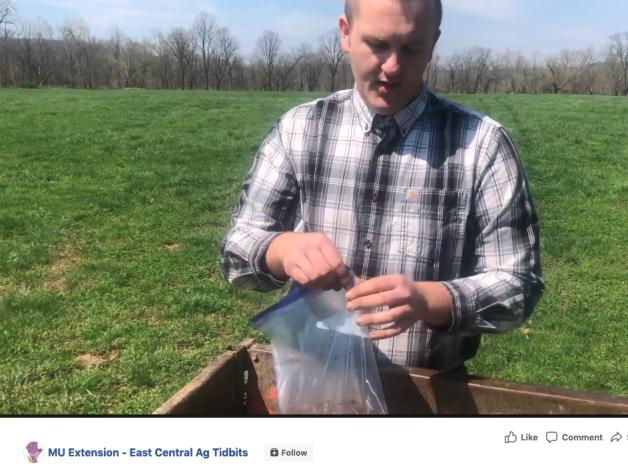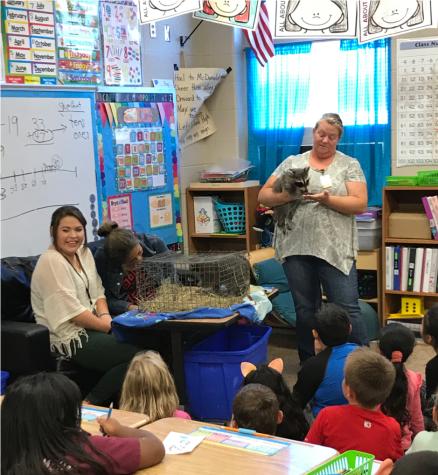
Grow your own veggies to ease COVID-19 financial stress
COLUMBIA, Mo. – In response to the tremendous interest in home food production, University of Missouri Extension now offers a free online course in basic vegetable gardening.“The ongoing COVID-19 pandemic has put an added financial strain on many Missouri families,” said MU Extension horticulturist David Trinklein. This has resulted in many people putting out vegetable gardens for the first time in an attempt to lower their food bills.

Podcast offers relationship advice during social distancing
Podcast shares tips on managing mental health, relationships, and dating during social distancing.
Considerations for bagged storage
Before deciding to use bags for storage, consider these key aspects of successfully using bagged storage:

MU Fire and Rescue Training Institute director to retire in August 2020
Kevin Zumwalt, longtime director of a fire and rescue training institute, will retire in August 2020 after decades of service and leadership.
Temporary grain storage piles
Characteristics needed to build a temporary grain storage pile A grain storage pile can be constructed as either a short-term or long-term storage facility, depending upon whether a grain aeration system is included. Aeration is a necessary component of a grain storage structure to successfully manage grain, so it can be stored for long periods of time. The steps below outline the basics of constructing a covered, grain storage pile…

MU Foremost Dairy colostrum management exceeds industry standards
Foremost Dairy boosts calf health with top-quality colostrum, lowering scours, pneumonia, and mortality.
Farmers markets: Safe, reliable, local food during COVID-19
ST. PETERS, Mo. – You can still safely shop and eat local during COVID-19, says a University of Missouri Extension horticulturist. “Farmers market managers across the state are working with advisers and local health departments to ensure the safety of their customers,” said Justin Keay, an extension horticulture specialist in the St. Louis area.
Houseplants may improve your health
Houseplants can reduce stress, improve sleep, and boost mood while purifying air. Discover how caring for plants supports health and well-being.
Safe gardening grows your mindfulness
Gardening enhances physical and mental well-being by providing exercise, time in nature and healthy food. Follow safety guidelines to maximize these benefits.
Spinach's popularity grew during Great Depression
COLUMBIA, Mo. - Many unsubstantiated stories exist about why cartoonist E.C. Segar chose spinach to give superhuman powers to his comic strip character Popeye the Sailor during the Great Depression.

Longtime 4-H volunteer shows no sign of slowing down
Elaine George has led her 4-H club for 30+ years, inspiring youths with dedication, hands-on projects, and lasting community connections.
Wet, cool wet weather playing havoc with crops
Cold, wet weather and hail are damaging Missouri corn, soybeans, and wheat. Learn causes, risks, and steps to assess crop injury and recovery.

East Central Ag Tidbits offers quick and timely tips
Get quick, practical tips for farming and ranching with short, timely videos and posts covering crops, livestock, and more.
Remove cool-season grass seed heads before they emerge
Manage tall fescue by removing seed heads early to boost forage quality and extend grazing and hay production.
MU Extension offers Wednesday town hall meetings online for farmers, gardeners
COLUMBIA, Mo. – University of Missouri Extension is offering online town hall meetings led by agronomy, livestock and horticulture specialists.“MU Extension has long served as a trusted and necessary resource to help Missourians get food on the table and gardens in the backyard,” says Lee Miller, coordinator of MU’s Integrated Pest Management program. “We’ll strive to continue this even through COVID-19.”

Noel Primary in-school 4-H wraps up successful first year
Noel Primary’s in-school 4-H club engages students in hands-on learning, community projects, and STEM activities during its first year.

Wayne County's weekly adventures
GREENVILLE, Mo. – “So, if the thrill of counting Easter eggs has faded and sightings of neighborhood bears in windows have become less frequent, would you be up for a new adventure?” asks Kelley Brent, county engagement specialist in nutrition and health for University of Missouri Extension in Wayne County.
May proclaimed Older Americans Month in Columbia
COLUMBIA, Mo. – The city of Columbia has designated the month of May as Older Americans Month — a fitting recognition of the insights and contributions older adults bring to society during a pandemic that has disproportionately affected this vulnerable population globally, said Jack Wax, advisory council chair for the Osher Lifelong Learning Institute at Mizzou.
Bah humbug to so-called murder hornets
Asian giant hornets are not a threat in Missouri; their “murder hornet” label is misleading and causes unnecessary fear.
The benefits of outdoor play for children
Outdoor play boosts children’s physical, social, and cognitive skills while sparking curiosity and confidence.
COVID-19 safety tips for volunteers delivering food
KANSAS CITY, Mo. – A University of Missouri Extension food safety specialist offers safety suggestions for volunteers delivering food to those in need during the COVID-19 era. “Many people at high risk of being severely affected by COVID-19 due to age or underlying health conditions depend on the generosity of friends, family members and volunteers for food and other necessities,” says Londa Nwadike, who holds a joint extension…
MU research: Corn emerging in 1-week window has little impact on yield
COLUMBIA, Mo. – Research by University of Missouri Extension agronomists shows that there is little yield difference in unevenly emerged corn. MU Extension agronomist Bill Wiebold researched corn emergence’s effect on yield in 2010 and 2011. Wiebold tagged individual plants from emergence through harvest. He compared the weight and height of early-emerging, mid-emerging and late-emerging plants.
Wheat and N: What to do?
Learn the best strategies for managing nitrogen in wheat fields to improve yield, especially in years with late planting and lower tiller counts.
Farmers can connect to MU Extension specialists weekly in public town hall meeting format
The need to abide by spring's timetable and produce food for the table doesn't wait for crisis to pass. Continued field crop, forage, and animal production are essential not only for the nutrients they provide, but also for the economic, mental and spiritual health they return to us and our communities.
Grain storage: A systematic approach
Stored dry grain represents a substantial investment of time and money. Protect that investment by properly drying and storing grain. The basics of grain drying, storage, management and care are outlined below.
